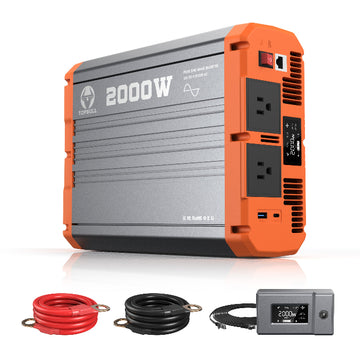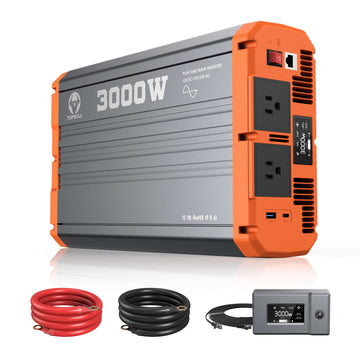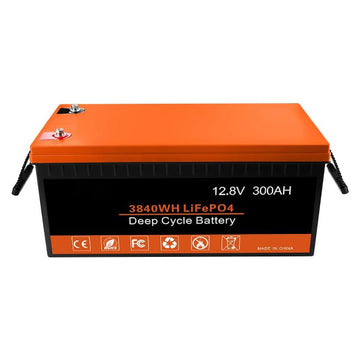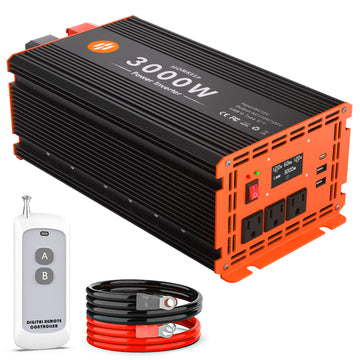An electronic inverter is an electronic device that converts direct current (DC) to alternating current (AC). It converts and regulates the current by controlling the switching elements to conduct or turn off at different moments to output the desired frequency and amplitude of AC power. This article will take you through how electronic inverters have been used in our lives.
Why is it called an electronic inverter?
As mentioned in previous articles, early inverters relied heavily on mechanical devices and brushes to convert current. With the advancement of semiconductor technology, electronic inverters replaced traditional mechanical inverters in the 1980s. Electronic inverters use solid-state switching elements (e.g., transistors, diodes, MOSFETs, etc.) to convert direct current into alternating current through high-frequency switching operations.
Electronic inverters (modern inverters) not only reduce the dependence on mechanical components and improve the reliability and intelligence of the system but also open up more application areas, such as solar power, wind power, and other renewable energy fields.
The following is a detailed comparison of electronic inverters with conventional inverters:
| Type | Electronic inverter (modern inverter) | Conventional inverter |
| Technical principle | It uses electronic semiconductor technology (such as MOSFETs or IGBTs) and digital control technology. Often, a microprocessor or DSP is built in for precise control and optimized performance. | Uses mechanical relay or transformer-based technology |
| Efficiency | Higher conversion efficiencies, typically between 90%-98% | Lower conversion efficiency |
| Waveform output | Can output a pure sine wave close to the utility standard, suitable for precision equipment. | Mostly square wave or modified sine wave, lower quality output, not suitable for power-sensitive equipment. |
| Size and weight | Adopting modern semiconductor technology and lightweight design, small size, and lightweight. | Usually relies on larger transformers, which are large and heavy. |
| Lifespan | No mechanical moving parts, long life, and low maintenance requirements. | Uses mechanical relays, is easy to wear and tear, shorter lifespan, and requires regular maintenance. |
| Function | Supports intelligent monitoring, remote control, and multi-function protection (e.g., overload, short-circuit, over-temperature protection). | Relatively single function, lack of intelligent support. |
| Applicable scenarios | Commonly used in solar power generation, home backup power, power supply for precision equipment, etc. | Suitable for low-budget basic power supply needs, but gradually eliminated in complex applications. |
Electronic inverter main types
1️⃣Inverter waveform
Inverters can be classified into pure sine wave, modified sine wave, and square wave according to the output waveform. Pure sine wave inverters have the same output waveform as the grid and are suitable for all types of electrical equipment. Modified sine wave inverters, on the other hand, are less expensive but may cause damage to sensitive equipment. Square wave inverters are the least expensive, but are not suitable for all electronic equipment and may cause overheating and noise.
Learn More: Modified vs Pure Sine Wave Inverter: What is the Difference
AC waveform
A pure sine wave output is ideal as it puts less stress on the components of sensitive electronic equipment. Topbull inverters provide a high-quality pure sine wave AC output rather than a noisy, dirty corrected sine wave.
2️⃣Inverter application scenario
Off-grid inverters are used for systems without access to utilities, such as stand-alone solar systems in remote areas, mobile RVs, boats, etc. It has the advantage of being able to operate independently and provide stable power in conjunction with batteries or solar panels.
Grid-tied inverter:
A grid-tied inverter converts DC power to AC power synchronized with the grid and returns excess power to the grid. It improves energy efficiency and can benefit from grid buy-back policies. However, grid-tied inverters are dependent on grid power and cannot operate during power outages.
Hybrid Inverter:
Hybrid inverters combine off-grid and grid-connected functions, enabling self-generation, grid-connected sales, and off-grid power supply. Hybrid inverters are flexible and suitable for a variety of application scenarios, but they are more expensive and have greater system complexity.
3️⃣Inverter electric phase
Single Phase Inverter:
Single-phase inverters output a single-phase alternating current, typically 220 V or 110 V. These inverters are simple in design and have a low output voltage, making them suitable for small to medium power applications. Commonly used in home power systems, grid-tied solar home systems, and small portable inverters.
Three-Phase Inverter:
Three-phase inverters output three-phase alternating current (AC), typically 380V or 400V, and are suitable for industrial three-phase grids. They can power multiple devices simultaneously and are particularly suitable for scenarios where high power or multiple devices are required. Three-phase inverters are suitable for industrial and commercial applications.
Electronic inverter application areas
Solar power system
A solar inverter is an integral part of a solar power system. Solar panels use photons from the sun to produce DC electricity, and your home appliances and the utility grid use AC electricity.
In a grid-tied solar system, a solar inverter converts DC power to AC power for use in the home and for transmission back to the utility grid.
In off-grid and hybrid solar systems, inverters convert electricity from AC to DC (and back) to be stored in solar cells for use by the home.
Like solar panels, solar batteries use DC power. Depending on the system, a storage inverter may also be required to convert DC to AC for use and then back to DC for storage.

Electric vehicle
You don't have to buy a separate inverter for your electric vehicle; it's a separate and necessary component to use the vehicle's battery. In an electric vehicle (EV), an electronic inverter is primarily used to control the operation of the motor and energy conversion.
The lithium-ion or lithium iron phosphate (LiFePO4/LFP) batteries in EVs store direct current (DC). The inverter converts the DC power from the battery to the AC power needed to run the motor and controls the speed and torque of the motor by regulating the frequency and voltage.
Home EV chargers use AC power. The inverter converts AC power to DC power, which is stored in the battery while the vehicle is charging, and supports the vehicle's ability to power external devices. Without a built-in inverter, you can't use the utility grid to charge your vehicle.

Home backup power
If your home does not receive direct sunlight or is not suitable for solar panel installation, a home battery backup solution is ideal. Without the need for solar panels, you can benefit from a combination of battery backup and an inverter.
Electronic inverters play a vital role in home backup power systems, providing reliable emergency power in the event of a power outage.
Industrial and commercial applications
Electronic inverters have a wide range of applications in industrial and commercial environments, primarily for efficient energy management and equipment control.
- Industrial motor drives: Drives provide variable frequency and variable voltage control of industrial motors for energy-efficient and automated operation. Examples include variable speed control for elevators, conveyors, and pumping equipment.
- Industrial solar power Systems: Inverters are used to manage grid-connected power generation, energy storage, and power delivery in factories, warehouses, large shopping centers, and other locations.
- Data center power: UPS inverters are used to ensure the continuous operation of servers during power outages or fluctuations.
- Commercial backup power: Large corporations, hospitals, and government agencies rely on high performance inverter systems to provide reliable backup power to keep critical equipment running-performance.
- Smart grid: Inverters play an important role in the smart grid, enabling the two-way flow of energy and improving grid stability and efficiency.
Electronic inverter future trends
The future of inverters will evolve towards intelligence, high performance, and sustainability. Inverters will integrate more intelligent technologies such as Artificial Intelligence (AI) and the Internet of Things (IoT) for remote monitoring, fault diagnosis, and automated optimization. Digital control will increase the flexibility and efficiency of the system, enabling it to adapt to complex energy management requirements such as smart grids and distributed energy management.
At the same time, inverters will focus more on efficiency optimization, further reducing energy losses through the use of more efficient semiconductor materials such as silicon carbide (SiC) and gallium nitride (GaN). At the same time, closer integration with renewable energy systems (e.g. solar, wind) will provide technical support to achieve the goal of zero carbon emissions.
How to choose the right electronic inverter
First, select the type of inverter (e.g., grid-tied, off-grid, single-phase, or three-phase) that is appropriate for the specific application to meet the power requirements and application environment. Also, prioritize inverters with high efficiency (typically >95%) to reduce energy losses. Consider the stability of the inverter under various load conditions to ensure that the output voltage and frequency meet the equipment requirements.
In a previous article, we explained in detail how to choose the right inverter, click here to read the article.













